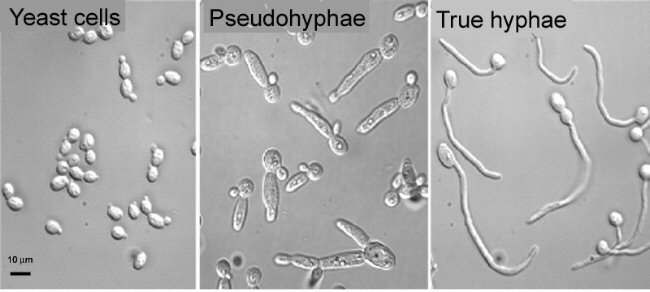Bachewich Research – Dept Biology – Concordia University
Candida albicans is a commensal fungus of the gasterointestinal and genitourinary tract. In healthy individuals it seldom causes diseases more serious than diaper rash or vaginal yeast infections. However, it has the capacity to cause serious to life-threatening diseases such as candidaisis and candidaemia, particularly in immune-compromised individuals. C. albicans has three types of cells—yeasts, pseudo-hyphae, and true hyphae (see image). The ability to switch between these morphologies is important for virulence. Hyphae of C. albicans can penetrate and destroy cells in tissue culture (see movie). The movie images were collected over 13 h by Dr. Anne Marcil in Dr. Malcolm Whiteway’s research group at BRI-NRC, Montreal PQ. We are investigating the role of the hypA morphogenesis gene in these processes.


